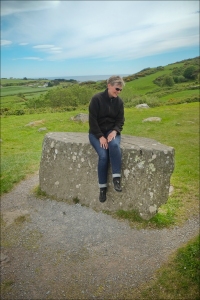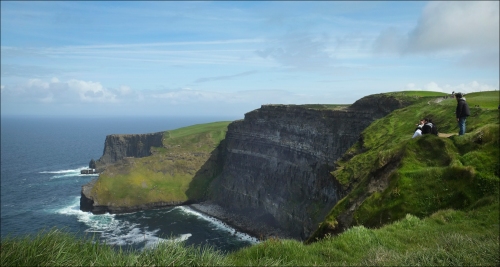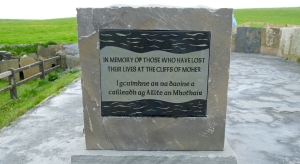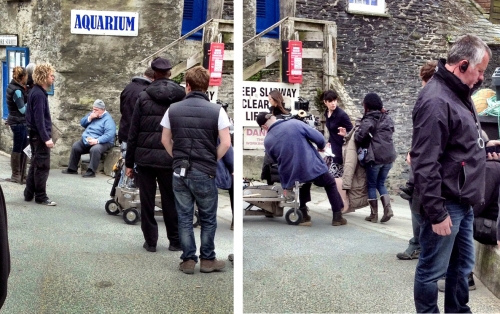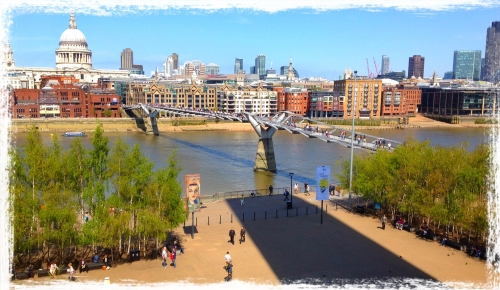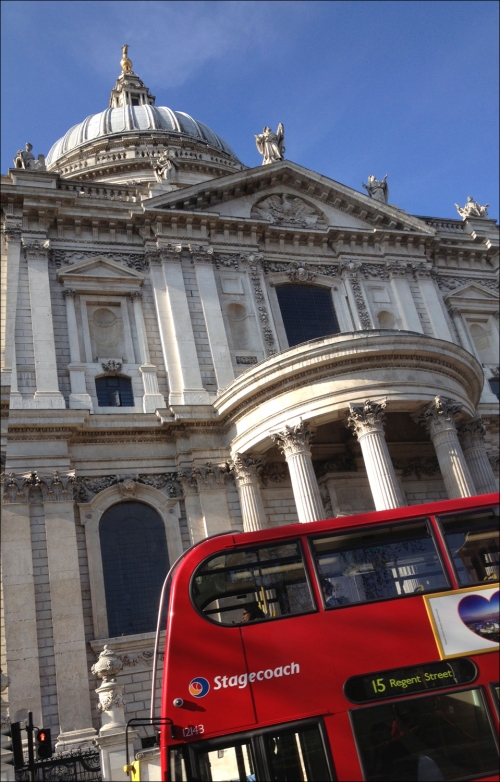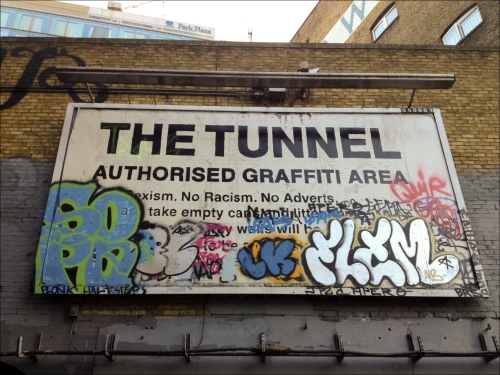On our way to Chester we passed Dunster Castle and were so intrigued by it’s amazing grandeur that we had to stop. When paying the entrance fee to was pointed out to us that if we intended to visit a few properties then the annual family membership to the National Trust was the more economical approach. That’s all Mr. Cheapskate needed to hear. We bought the membership, and began a race through Northern Ireland to get our money’s worth by visiting as many Trust properties as possible. Regardless of the motives, this scheme has allowed us to see some outstanding places and learn a lot about how the landed gentry and obscenely wealthy from as far back as the 17th century lived their lives in Northern Ireland.
Dunster Castle
Dunster Castle is a fascinating property with a long and exciting history. A stone shell keep was built on this site at the start of the 12th century. The castle survived sieges, battles, civil wars and bankruptsies. The castle has been occupied until the late 20th century when it was turned over to the Trust.
-

-
Dunster Castle
-

-
Dunster Castle
-

-
Dunster Castle
-

-
Dunster Castle
-

-
View from Dunster Castle
-

-
View from Dunster Castle
Castle Ward
Castle Ward, built in the 1760s reflects the differing tastes of Lord Bangor and his wife. While the entrance side of the building is done in a classical Palladian style, the opposite side is Georgian Gothic. This differences in style continue throughout the interior of the house with the divide down the center.
-

-
Castle Ward
-

-
Castle Ward
-

-
The Sunken Garden – Castle Ward
-

-
Castle Ward
-

-
The Horse Yard – Castle Ward
-

-
Castle Ward
-

-
The Udder Room – Castle Ward
-

-
Castle Ward
-

-
The View From Castle Ward
-

-
The View From Castle Ward
Mount Stewart
Charles, 3rd Marquess of Londonderry’s second wife, Lady Frances Anne Vane-Tempest, was the greatest heiress of her time. This infusion of huge new wealth prompted the refurbishment and enlargement of Mount Stewart. While spending £150,000 on the refurbishment, £52 million in today’s money, they only gave £30 to famine relief in Ireland in the 1840s, illustrating the inhumanity that existed within Ireland at the time.
-

-
Mount Stewart
-

-
Mount Stewart
-

-
Mount Stewart
-

-
Mount Stewart
-

-
Mount Stewart
-

-
Mount Stewart
-

-
Mount Stewart
-

-
Mount Stewart
Hambletonian
The horse in this very large painting is Hambletonian, the 18th century’s most celebrated racehorse. He was owned by Sir Henry Vane-Tempest, Sir Stewart’s father in law. In a famous four mile match at Beacon Course in Newmarket on 25 March 1799, Hambletonian won by a neck and was said to have covered 21 feet in a single stride at the finish. Sir Henry had wagered the huge sum of 3,000 guineas ($300,000) on the outcome. Afterwards the horse was the subject of this painting, Hambletonian Rubbing Down, by the great equine artist, George Stubbs. The stable boy, handler and horse all appear agitated and tense. After seeing the painting some of Sir Henry’s detractors commented that it was because the horse had been whipped and treated badly in the race. When Sir Henry heard this he became so distraught that he refused the painting. The 75 year old Stubbs stood firm and refused to alter the image. Over time Sir Henry softened and eventually paid for and took possession of the painting, which today is priceless. Most recently, one of Stubbs paintings was sold by Christies for a record $36 million.
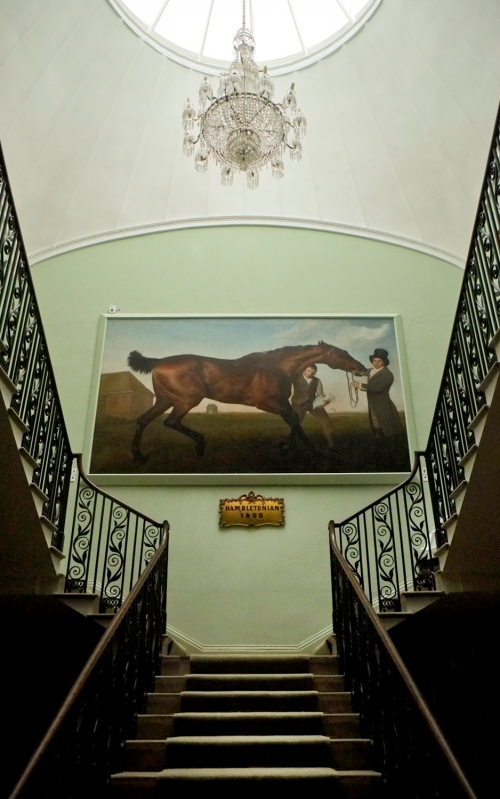
“Hambletonian Rubbing Down” by George Stubbs
Downhill Demesne
After a visit in 1801, one visitor wrote of the location, “It is impossible not to regret the misapplication of so much treasure upon a spot where no suitable Desmesne can be created…where the salt spray begins to corrode this sumptuous pile of Grecian Architecture, and the imagination anticipating the distant period weeps over the splendid Ruin, a sad monument of human folly.”
-

-
Bishops Gate – Downhill Demesne
-

-
Downhill Demesne
-

-
Mussenden Temple – Downhill Demesne
-

-
Downhill Demesne
-

-
Mussenden Temple – Downhill Demesne
-

-
Downhill Demesne
Giant’s Causeway
The columns are the remains of a causeway built by the giant, Finn MacCool, who was challenged to a fight by the Scottish giant Benandonner. Finn accepted the challenge and built the causeway across the North Channel so that the two giants could meet.
-

-
Giant’s Causeway
-

-
Giant’s Causeway
-

-
Giant’s Causeway
-

-
Giant’s Causeway
-

-
Giant’s Causeway
Carrick-a-Rede
Carrick-a-Rede Rope Bridge links the mainland to the tiny island of Carrickarede.
-

-
Carrick-a-Rede
-

-
Carrick-a-Rede
-

-
Carrick-a-Rede
-

-
Carrick-a-Rede
-

-
Carrick-a-Rede
-

-
Carrick-a-Rede
Castle Coole
Castle Coole was constructed at a cost of £57,000 in 1798, equivalent to approximately £20 million today.
-

-
Castle Coole
-

-
Castle Coole
-

-
Castle Coole
Florence Court
Early on the morning of March 22, 1955, 72 year old Lady Enniskillen discovered a fire on the first floor landing. She ran to nearby Killymanamly House and telephoned the elderly 5th Earl of Enniskillen , at the Ulster Club in Belfast. He is said to have cried “What the hell do you think I can do about it?”.
-

-
Florence Court
-

-
Florence Court
-

-
The canons were won in a card game at Castle Coole
The Argory
In 1852 the Royal Navy troopship HMS Birkenhead. struck the rocks off Danger Point, South Africa. Prior to this, evacuation was a “every man for himself affair”. When Captain Shelton saw the sailors rushing to the lifeboats cried “women and children first”. This has come to be known as “the Birkenhead Protocol”.
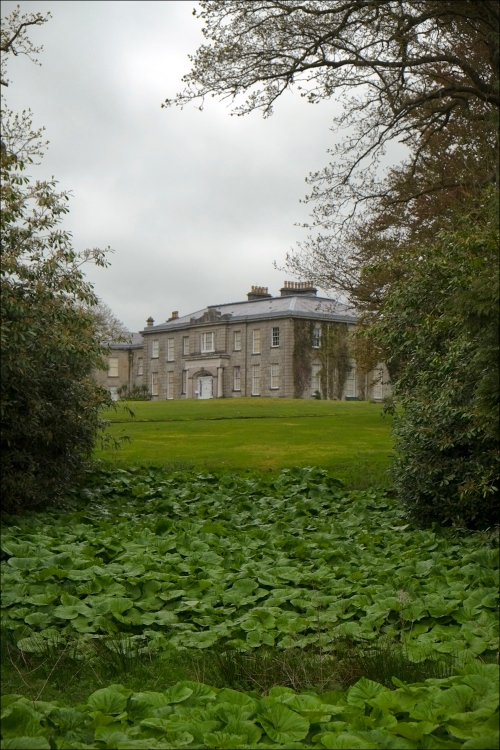
The Argory

